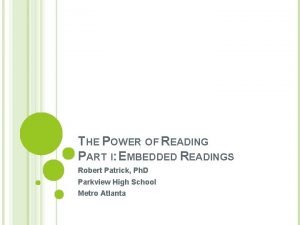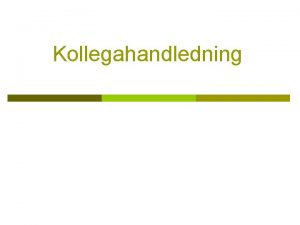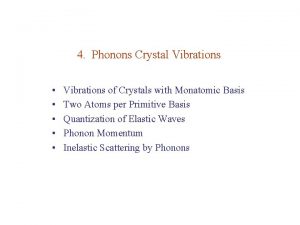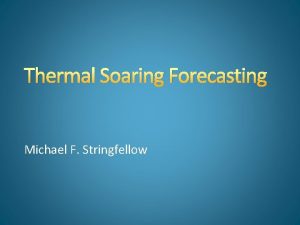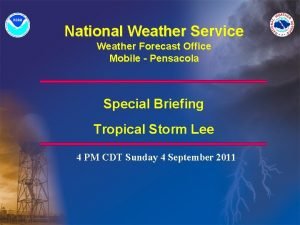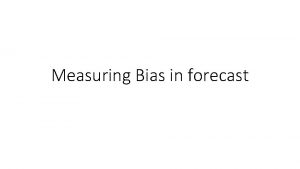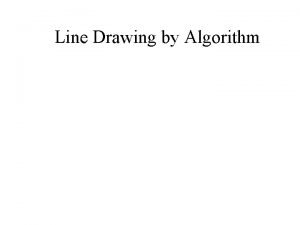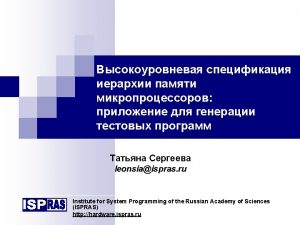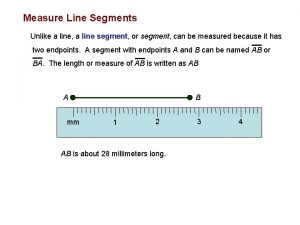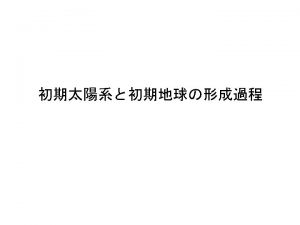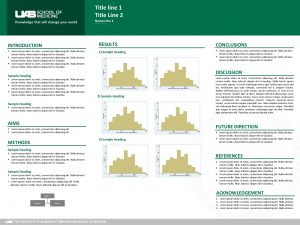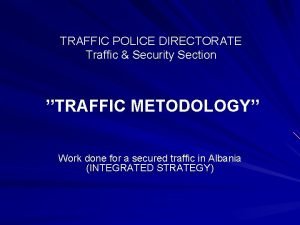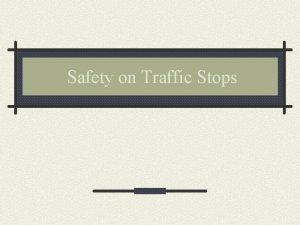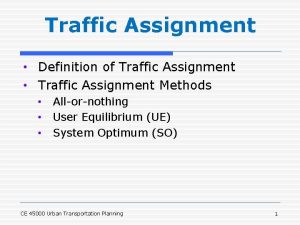Traffic Theory 1 Traffic forecast per line Two



























- Slides: 27

Traffic Theory 1

Traffic forecast per line Two types of forecast are required: (i) The forecasting of subscriber density, and (ii) The traffic forecasting per line. 2

Quality of service The following factors can be used to gauge the service quality: 1 - Transmission quality (e. g. , crosstalk, echo). 2 - Dial-tone delay, 3 - Grade of service (proportion of lost calls). This can be determined using teletraffic theory, 4 - Adaptation of system to subscriber, 5 - Billing errors (e. g. , method of billing and its administration) 6 - Fault incidence and service deficiency. 3

Quality of service When a quality of service requirement is set, one of two possible approaches can be taken: 1 - Worst case design The network is designed for a maximum permitted impairment in the most unfavorable case 2 - Statistical design The design in this case is carried out for a certain range of impairments occurring 4

Teletraffic Theory • Teletraffic theory is defined as the application of probability theory to the solution of problems concerning planning, performance evaluation, operation, and maintenance of telecommunication systems. • The objective of teletraffic theory: make the traffic measurable in well defined units through mathematical models and to derive the relationship between grade-ofservice and system capacity. 5

Traffic Analysis • The techniques of traffic analysis can be divided into two general categories: loss systems and delay systems. • The appropriate analysis category for a particular system depends on the system's treatment of overload traffic. • In a loss system overload traffic is rejected without being serviced. • In a delay system overload traffic is held in a queue until the facilities become available to service it. 6

Traffic Analysis • Conventional circuit switching operates as a loss system since excess traffic is blocked and not serviced. • Store-and-forward message or packet switching obviously processes the basic characteristics of a delay system. • The blocking probability analyses are referred to as congestion theory and delay analyses are referred to as queuing theory. 7

Traffic Measurement • One measure of network capacity is the volume of traffic carried over a period of time. • Traffic volume is essentially the sum of all holding times carried during the interval. • Traffic intensity “Traffic flow” is obtained by dividing the traffic volume by the length of time during which it is measured. Thus traffic intensity represents the average activity during a period of time. • The traffic intensity is defined as the product of the calling rate and the average holding time. • The busy hour is defined as that continuous 60 minute period during which the traffic intensity is 8 highest.

Arrival Distribution • The most fundamental assumption of traffic analysis is that call arrivals are independent. • This is, an arrival from one source is unrelated to an arrival from any other source. 9

Negative Exponential Interarrival Times • The average call arrival rate from a large group of independent sources (subscriber lines) as “lambda”. Use the following assumptions: • Only one arrival can occur in any sufficiently small interval. • The probability of an arrival in any sufficiently small interval is directly proportional to the length of interval. (The probability of an arrival is (lambda x dt) where the interval length is dt). • The probability of an arrival in any particular interval is independent of what has occurred in other intervals. 10

Negative Exponential Interarrival Times The probability distribution of inter-arrival times is given by This equation defines the probability that no arrivals occur in a randomly selected interval. 11

Poisson Arrival Distribution • The equation of negative exponential distribution gives a mean of determining the distribution of interarrival times. • The probability of j arrivals in an interval t can be determined as 12

Basic Teletraffic Concepts • The inter-arrival time, respectively the interdeparture time, are the time intervals between arrivals, respectively departures. 13

Basic Teletraffic Concepts • Arrival Call Rate : The demand for telephone calls may arise randomly at any hour of the day or night. Dividing the number of call requests during a measured time interval by that interval gives the mean call rate. • Busy hour : The heaviest teletraffic period of the day and is used as a parameter during the design of the network. 14

Basic Teletraffic Concepts • Call Duration (Channel Holding Time): Once a call attempt is successful and a channel is assigned, the period of time during which the channel is occupied by the call is called the call duration or the channel holding time T. • The reciprocal of the call duration is called the termination rate, the departure rate or the service rate, 1/T. • Because calls occupy the channel for a random length of time, we are usually interested in the mean call duration. 15

Basic Teletraffic Concepts • A negative exponential distribution with a mean of 120 -180 seconds provides a satisfactory representation of the probability density function (pdf) of the call duration, i. e. , 16

Basic Teletraffic Concepts • The most important feature of the negative exponential distribution is its memoryless property, (Markovian property), means that the probability that a call terminates in a given interval is not related to the time the call has been in progress. • 17

Basic Teletraffic Concepts • Offered Traffic: The product of the mean call rate and the mean holding time determines the amount of load presented to the network. • It is called the offered traffic, the traffic intensity or the traffic load. It is expresses as The offered traffic is usually expresses in Erlangs Traffic which occupies a channel for one hour is defined as one Erlang. 18

Basic Teletraffic Concepts • In the USA, offered traffic is also expressed in terms of hundred (century) call-seconds per hour (CCS). • 1 CCS is the traffic due to one call of 100 seconds duration, or 100 calls of 1 second duration, or any combination in between. • Traffic which occupies a channel for one hour is defined as one Erlang. As there are 3600 call-sec in an hour, an Erlang is equal to 36 CCS. 19

Basic Teletraffic Concepts • Carried Traffic: The total traffic carried in a time period is a traffic volume, and it is measured in Erlang–hours (Eh). • It is equal to the sum of all holding times inside the time period. The difference between offered traffic and carried traffic is equal to the rejected (lost) traffic. 20

Basic Teletraffic Concepts • Grade of Service: It is a measure of congestion expressed as the probability that a call will be blocked or delayed. • When the number of call arrivals exceeds the rate which they can be handled by the network, they will be either rejected, i. e. , lost, or queued, i. e. , forced to wait, according to the method by which the networks handles the blocked traffic. • When a call can not be set-up immediately because there is no free channel available, blocking or congestion is said to have occurred. 21

Basic Teletraffic Concepts • Time Congestion: It is the percentage of time during which all channels are occupied. It is also represents the probability that all channels are busy. It is measured as the ratio of the busy period to the total period of observation. • Call Congestion : the probability that call arrives during the congestion period and hence is lost. It is the ratio of lost traffic to the total traffic offered. • 22

Design Criteria • The following design criteria are taken into account: • • The method of handling the traffic Statistical Characteristics of Traffic Offered Characteristics of the Switching Network The Grade of Service 23

The method of handling the traffic • There are two major types of teletraffic systems. The first is the Blocked Calls Cleared (BCC), sometimes called Lost Calls Cleared (LCC) or simply, loss system. In the BCC system, if a call on its arrival finds all the channels busy, it is cleared from the system because there is no mechanism for putting the call in a queue to await the occurrence of a free channel. • In this case, the Go. S is defined as the probability that an offered call will be lost. It is also called the loss probability, the call congestion or the blocking probability. Its numerical value is equal to the proportion of the offered traffic which are rejected or lost. In a loss system, therefore, formulae are required for the probability that all channels are busy, i. e. , that time congestion occurs, and the probability that a call arriving will not find a free channel, i. e. , when call congestion is present. • 24

The method of handling the traffic • The second system is the Blocked Calls Delayed (BCD), sometimes called a delay system or waiting system. By contrast to BCC system, in the BCD system, offered calls which can not handled immediately may wait until a free channel become available. The sequence in which the waiting calls are handled is called the queuing discipline. • For example, this may include handling in order of arrival, i. e. , First-In-First-Out (FIFO), or at random, etc. In the BCD system, the Go. S is mainly expressed as the probability that an incoming call will be delayed. 25

Statistical Characteristics of Traffic Offered • Calls arrive at the network and depart at random. The number of calls in progress, and hence the number of busy channels, vary in a random fashion. The attempted call rate depends on the number of users generating the offered traffic. • If the number of users is too large (theoretically infinity) compared to the number of channels (e. g. , 10 times practically), the arrival call rate can be assumed to be independent on the number busy users. In this case, the traffic is said to be pure random or pure chance traffic that is distributed according to Poisson law. • • When the number of users is finite, the arriving call rate depends on the number of busy users that has the ability to generate traffic. Although calls still occur at random, the rate is correlated to the number of busy channels. The traffic in 26 this case is said to be quasi-random traffic.

Characteristics of the Switching Network • When all channels are available for all the calls, we said that the switching network is full available. • On the other hand, when some channels are restricted to be accessed by certain type of traffic, we have a limited available switching network. The method by which these channels are arranged is called the grading of the switch. 27
 Differentiate between plain scale and diagonal scale
Differentiate between plain scale and diagonal scale Inbound traffic vs outbound traffic
Inbound traffic vs outbound traffic Intelligent traffic solutions
Intelligent traffic solutions Approssimazione per difetto e per eccesso
Approssimazione per difetto e per eccesso Coop per me e per te
Coop per me e per te Una voce l'amato mio
Una voce l'amato mio Pats joja kojos uz ausu
Pats joja kojos uz ausu 186 282 miles per second into meters per second
186 282 miles per second into meters per second Minute 60
Minute 60 Nama sudut lkm
Nama sudut lkm Per stirpes v per capita
Per stirpes v per capita Multas per gentes et multa per aequora vectus
Multas per gentes et multa per aequora vectus Longum iter est per praecepta breve et efficax per exempla
Longum iter est per praecepta breve et efficax per exempla Per capita vs per stirpes
Per capita vs per stirpes Catullus 84
Catullus 84 International signs drivers ed
International signs drivers ed The which if you with patient ears attend in modern english
The which if you with patient ears attend in modern english Create your own sonnet
Create your own sonnet Two atoms per primitive basis
Two atoms per primitive basis Helicopter weather forecast
Helicopter weather forecast John day river flow forecast
John day river flow forecast Regional atmospheric soaring prediction
Regional atmospheric soaring prediction Nws probabilistic snow forecast
Nws probabilistic snow forecast Spot weather forecast monitor
Spot weather forecast monitor Pensacola wind forecast
Pensacola wind forecast Reno soaring forecast
Reno soaring forecast Tracking signal formula
Tracking signal formula Pensacola marine forecast
Pensacola marine forecast











